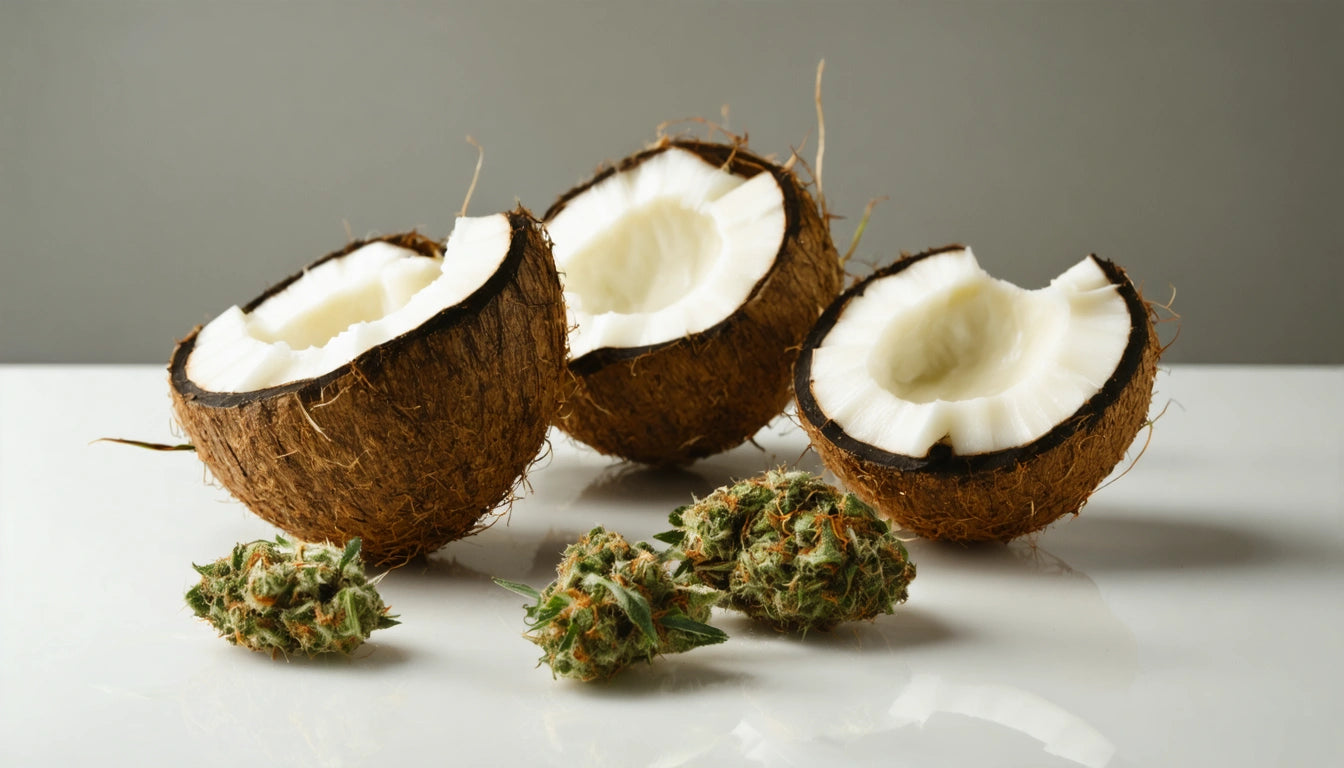How to Make Cannabis-Infused Coconut Oil for Edibles
Cannabis-infused coconut oil is a versatile base for homemade edibles, topicals, and tinctures. This comprehensive guide walks you through creating potent, consistent THC coconut oil using simple equipment and techniques. Whether you're making pot brownies or medicinal applications, mastering this fundamental infusion opens up countless possibilities.
Why Coconut Oil for Cannabis Infusions
Coconut oil stands out as the best coconut oil for edibles due to its high fat content. Cannabis compounds like THC and CBD are fat-soluble, meaning they bind effectively to fatty molecules. With approximately 80% saturated fat content, coconut oil extracts cannabinoids more efficiently than other cooking oils.
Additional benefits include:
- Long shelf life with minimal refrigeration
- Pleasant flavor that complements cannabis
- Versatility in both sweet and savory recipes
- Solid at room temperature, making it ideal for topicals
- Contains MCTs (medium-chain triglycerides) which may enhance cannabinoid absorption
You can use either refined or unrefined coconut oil. Refined has a higher smoke point and neutral flavor, while unrefined (virgin) coconut oil retains more coconut flavor and nutritional benefits.
Supplies Needed
Before learning how to make weed infused coconut oil, gather these essential items:
- 7-14 grams of cannabis flower (adjust based on desired potency)
- 2 cups of coconut oil
- Grinder (for breaking down cannabis)
- Baking sheet and parchment paper (for decarboxylation)
- Cheesecloth or fine mesh strainer
- Thermometer (optional but recommended)
- Double-boiler, slow cooker, or saucepan
- Storage containers (preferably glass)
For the grinding step, using quality cannabis grinding equipment ensures proper consistency without pulverizing the material too finely, which can affect filtration later in the process.
Preparing Your Cannabis
Decarboxylation Process
Before infusing, you must decarboxylate your cannabis to activate the THC. Raw cannabis contains THCA, which must be converted to THC through heat. This comprehensive guide explains why decarboxylation is essential for potent infusions.
To decarboxylate:
- Preheat your oven to 240 °F (115 °C)
- Break up cannabis buds into small pieces
- Spread evenly on a parchment-lined baking sheet
- Bake for 30-40 minutes until lightly browned
- Allow to cool before grinding
Step-by-Step Infusion Process
Stovetop Method
The stovetop method for how to make cannabis coconut oil requires careful temperature control:
- Set up a double boiler by placing a heat-safe bowl over a pot of simmering water
- Add coconut oil to the bowl and melt completely
- Add decarboxylated, ground cannabis to the melted oil
- Maintain temperature between 160-200 °F (70-93 °C) for 2-3 hours, stirring occasionally
- Monitor to prevent overheating, which can degrade THC
Slow Cooker Method
For a more hands-off approach to make weed oil with coconut oil:
- Add coconut oil and decarboxylated cannabis to slow cooker
- Set to low heat (ideally around 160-180 °F/70-82 °C)
- Cover and infuse for 4-6 hours, stirring occasionally
- If your slow cooker runs hot, use the "warm" setting instead of "low"
Straining and Storing
After infusion, strain the mixture:
- Place cheesecloth over a glass container
- Pour the warm oil mixture through the cheesecloth
- Allow to drain naturally (avoid squeezing to prevent plant material from passing through)
- For clearer oil, strain a second time if desired
Learn more about filtration techniques in our detailed guide on cannabis-infused coconut oil.
Storage and Shelf Life
Properly stored cannabis coconut oil can last several months:
- Store in an airtight glass container
- Keep in a cool, dark place or refrigerate
- Label with date and potency information
- Refrigerated oil remains stable for 2-3 months
- Freezing can extend shelf life to 6+ months
If your coconut oil solidifies, simply warm it gently to make coconut oil liquid again for easier handling.
Dosage Guidelines
Determining potency when you make THC infused coconut oil depends on several factors:
- Cannabis potency (THC percentage)
- Amount of cannabis used
- Infusion efficiency
- Consumption method
For beginners, start with 1/4 to 1/2 teaspoon and wait at least 90 minutes before considering additional doses. Our THC oil guide provides detailed dosage calculations for more precise measurements.
Troubleshooting Common Issues
When learning how to make pot coconut oil, you might encounter these challenges:
- Weak potency: Insufficient decarboxylation, too low infusion temperature, or inadequate infusion time
- Burnt taste: Temperature too high during infusion
- Excessive plant matter: Inadequate straining or grinding cannabis too finely
- Mold development: Water contamination or improper storage
For best results, maintain careful temperature control and use high-quality starting materials.
Creative Ways to Use Cannabis Coconut Oil
Your infused coconut oil works in virtually any recipe calling for oil or butter. Try these applications:
- Baked goods like cannabis brownies or cookies
- Sautéing vegetables or making stir-fries
- Adding to coffee or tea as a creamer alternative
- Creating homemade cannabis capsules
- Topical applications for localized relief
- Base for cannabis-infused salad dressings
With practice, you'll develop your preferred method for how to make infused coconut oil that meets your specific needs and preferences. Remember that homemade edibles can vary in potency, so always start with small amounts until you understand your batch's effects.











Leave a comment
All comments are moderated before being published.
This site is protected by hCaptcha and the hCaptcha Privacy Policy and Terms of Service apply.